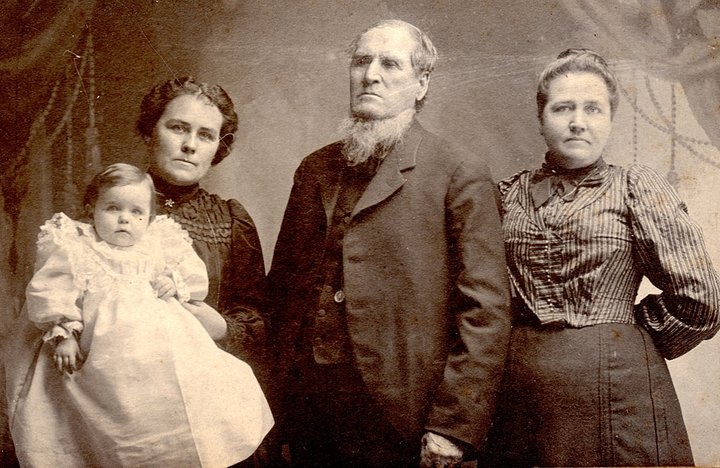Point and shoot. That's how many people think about modern photography. A lot of things we take for granted today developed in the 1800s, including photography. Exposures took days until Louis Daguerre invented his daguerreotype process, which reduced days to minutes and produced clearer, more detailed images. At about the same time, the Victorian Period began with the ascension of Queen Victoria to the British throne. Disease was rampant and mortality rates were high, especially among children under five years old. Arguably, these were contributing factors to the unintended birth of portrait photography.
A BBC article, Taken From Life: The Unsettling Art of Death Photography, reminds us that the first successful form of photography, the daguerreotype, meant that small, detailed images could be put on polished silver. They were expensive and considered a luxury, but they were not as expensive as having a portrait painted, which at the time was the only way to permanently capture someone's image. The process caught on, and as it spread, the costs went down, and the printable media choices grew. There was now glass, thin metal, and even paper, all cheaper alternatives.

The girl on the right is the deceased one.
It's referred to as "death photography." Post-mortem photographs became popular at the time, because portraits, especially of children, were taken as a memento of a loved one who had passed. So, they dressed them up and posed the deceased in a number of ways to try and conceal their true state. This was accomplished in a number of ways, including propping them up with something, leaning them against something, or even in an extreme example, painting eyeballs onto the dead person's eyelids. It might seem creepy to us, but at the time, it was quite normal. It was the photographer's job to make their subjects look as life-like as possible. So, what better way than to make it look like the subject was sleeping?

The man at the center is the deceased, his eyes replaced with glass eyes and propped up.
Whenever you look at death photography images, look carefully. Sometimes, it is easy to spot the attempts to hide the person's true state. Others are much more subtle and refined. It was common for family members to pose with the deceased, and earlier images show the dead person more sharply. That's because exposures took several minutes in the earlier days, so the live people would move ever so slightly, resulting in a slightly blurred image, while the deceased was perfectly still.

The deceased were often surrounded by their favorite things.
Ironically, as medical care improved and the mortality rate dropped, the demand for death photography also declined. More and more families sat for photo sessions as part of a growing tradition. Thankfully, portrait photography also survived.
[via BBC]
If you're passionate about taking your photography to the next level but aren't sure where to dive in, check out the Well-Rounded Photographer tutorial where you can learn eight different genres of photography in one place. If you purchase it now, or any of our other tutorials, you can save a 15% by using "ARTICLE" at checkout.







There is a fantastic book called "Beyond the Dark Veil: Post Mortem & Mourning Photography from The Thanatos Archive" that is available from retailers like Amazon. This is probably one of the best put together Post Mortem photography books out there if you are ever interested in exploring this topic further.
I just added it to my list on Amazon. Looks very interesting, thanks for the recommendation.
I just entered the books title into Google Images which gave a sampling of the books contents, cool beans ;o) or :o( given the subject. Thanks for sharing ...
I got a box full of old glass negatives from early 20th century, always thought this one is photo is of a dead child. Not as obvious as the first photo in this article though.
That's morbid, but very interesting though. I keep 3 or 4 photographs of deceased relatives that remind the first one. Of course they are not so old. The oldest is from the 40's.
Wow, I wonder if death photos will catch on again!! Fascinating how it all began for portrait photography.
---Chris Hooper of Austin TX
https://aoxoa.co/austin-tx-portrait-photographer-headshot-photography/